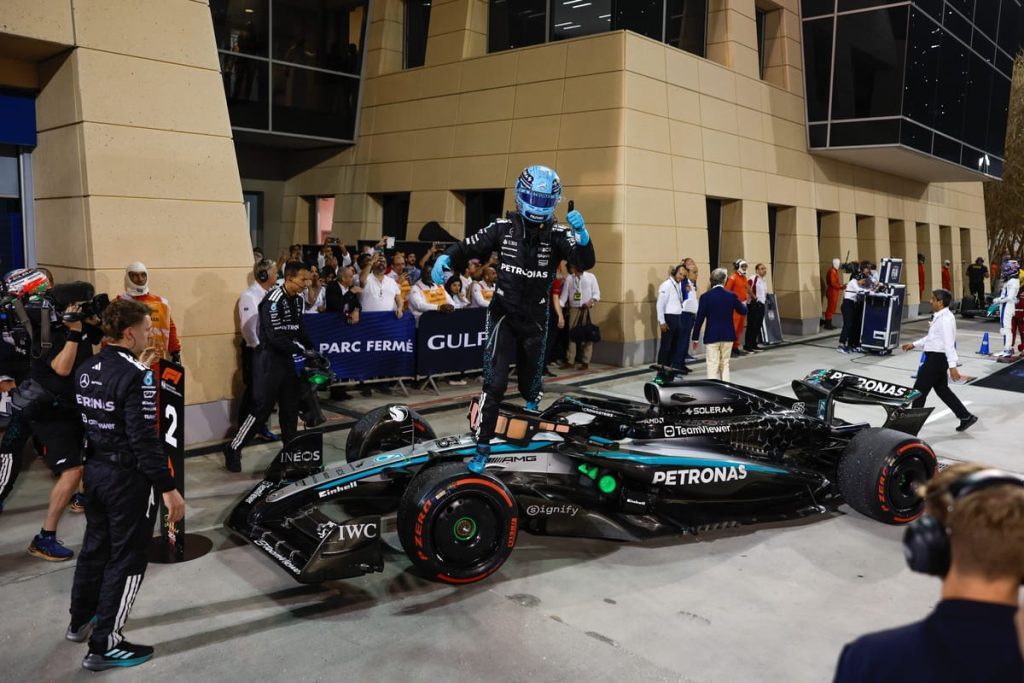Russell’s Cooling Vest Debut in Bahrain
George Russell recently shared that he discreetly introduced one of Formula 1’s newest technologies during the Bahrain Grand Prix, where he finished second while wearing a cooling vest.
The FIA had initially planned to mandate cooling vests for this season in response to the heat-related issues faced by drivers during the 2023 Qatar Grand Prix. However, after several drivers raised concerns about the difficulty of fitting the cooling tubes comfortably in the cockpit, the FIA decided to postpone the mandatory implementation until 2025, making their use optional for events declared as ‘heat-hazard.’
Drivers opting not to use the cooling system must carry an additional 5kg of ballast to compensate for the weight and dimensions of the system that others are using. Although Bahrain’s temperatures fell short of the 30.5C threshold for intervention, Russell felt it was warm enough to wear the vest.
After finding it effective during practice, Russell chose to wear it for both qualifying and the race, with images capturing the tubes as he exited the car. He expressed, “It’s good… It’s great that as a team, we are pushing these boundaries.” He noted that the cooling effect was enjoyable, with temperatures around 16C circulating around his body amidst cockpit conditions exceeding 50C.
Despite his positive experience in Bahrain, Russell is uncertain how comfortable the vest will be during the higher-speed Saudi Arabian circuit, stating he would test it during Friday practice before making a decision for the remainder of the weekend.
Driver Reactions to the Cooling Vest
While both Mercedes drivers appear satisfied with the cooling vest, others in the paddock are less convinced. Haas’ Esteban Ocon previously commented on the vest’s impracticality for his cockpit, while Ferrari’s Lewis Hamilton expressed surprise at Russell’s decision to race with it, citing the added weight of 5kg that accompanies its use.
Hamilton acknowledged the ongoing development of the cooling vest, stating, “I want to look at how I can prepare better… But I do understand it’s tough and we don’t want drivers passing out.” While he appreciates the technology’s potential benefits, he prefers to avoid using it, favoring alternative methods for maintaining his physical condition during races.
Although the cooling vest does contribute an approximate weight of 5kg, it’s believed that Mercedes managed to offset this by removing other ballast. Russell also feels that even with a minor weight penalty, the advantage of entering a race in better physical shape makes the system worthwhile.



